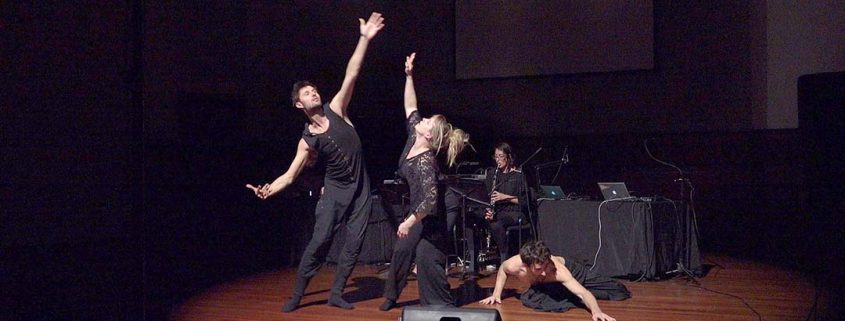Thornton students create new music on laptops
Electro-acoustic music is created by the electronic tinkering and adjusting of sounds. Simply by pressing a button or moving a slider, one can create sounds rich in tonality and color that mirror those accomplished by plucking a string or pressing a key. On Monday, the Thornton School of Music invited students to experience these infinite possibilities of electro-acoustic sound.
The ensemble consisted of music composition majors: freshmen Maia Thomas, Sophie Mathieu, Caleb Hannan, Lucy McKnight and Victoria Vasta; senior Richard An; and graduate students Dan Caputo, Ryan McWilliams and Stephen Cabell. Doctor of Musical Arts Composition student Eric Pham led the group.
“There’s ease of access because of the fact that you’re dealing with buttons, knobs and sliders, which everyone interacts with everyday,” Pham said.
Using and interacting with such everyday tools makes learning how to create electro-acoustic music fairly easy, but the actual process of assigning meaning to compositions is a much more nuanced process.
“It’s good to have a set of rules for yourself because it makes you more creative,” Pham said.
The ensemble followed Pham’s advice, and the showcase featured various creative performances while maintaining the distinct ethereal style among the group. Using white noise and dissonance paired with haunting hums and expressive beeps, the ensemble evoked the otherworldly aspect of their music and drew the audience in.
One particular piece, “Gravity Well,” used the musicians’ voices as well as musical effects to create a stirring piece in which the natural and the electronic blended seamlessly. An, Mathieu, McKnight and Maia Thomas sang different notes before they playbacked their recordings, layering individual voices over one another while adjusting the tone and depth of the notes on their controls. As the piece went on, the musicians moved with their composition, looking toward one another and conversing through their electronic instruments.
Another piece, titled “The VII Machine,” showcased the possibilities musicians have when playing music from their laptops. An, Caputo, McWilliams and Thomas deftly went from slider to button to knob, adjusting dissonant sounds and loud beats while adding wobbling effects and changing tempo. The effect was a perfect chaos, in which the overlapping sounds, sudden starts and stops and rich colors of the piece entranced the audience.
“You should be able to explain before you get started what effect you’re trying to get and make sure that everything you add is serving that purpose,” Pham said.
The artists featured in the piece “Lucid Dreaming” achieved their effect of transporting the audience into the semi-conscious state of the dream world. Dancers Stephen Beitler, Jeremy Hahn and Alison Hart from the L.A.-based performance collective Efflorescence, graduate oboe performance student Theodosia Roussos on the English horn, CalArts graduate Kathryn Shuman on vocals and Eric Pham on electronics led the audience into a dreamlike state.
The fluid and then sharp movements of the dancers coupled with Shuman’s altered vocals, Roussos’ mesmerizing English horn and Pham’s dissonant sounds created an atmosphere where everyone was trying to escape from the dream they were stuck in.
The night concluded with a visual and audio performance of “Boomdinger,” showcasing the exciting opportunities music listeners have in the future of electro-acoustic sound. With optical illusion visuals filled with different shapes, letters and outlines, the performers matched their diverse beats to the images projected, creating an eccentric experience for the audience’s senses.
“We need to think about [electronic music] as a valid ensemble and as vigorous and meaningful as a composition of practice,” Pham said.

